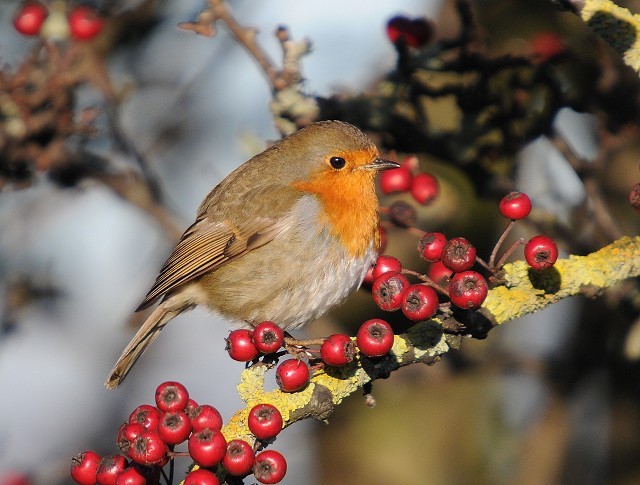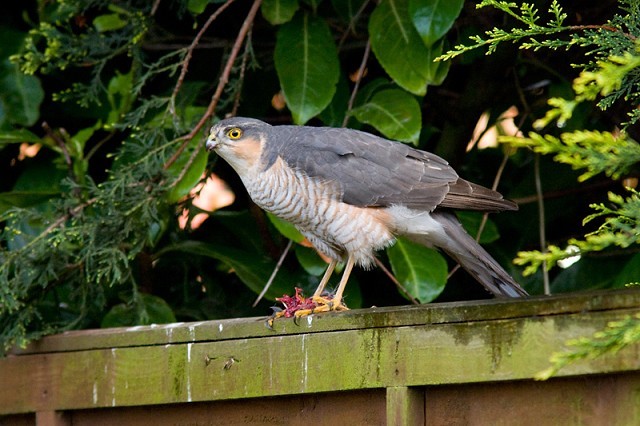Like most small birds, Robins are lucky if they manage to reach their second birthday. While some fail to survive the winter cold, others fall prey to predators (for example cats or Sparrowhawks), fly into windows or get killed by motor traffic. The BTO has produced a new leaflet to help concerned garden birdwatchers to counter at least one of the many risks that Robins face, namely Sparrowhawk predation.

Robin, Prestwick, Ayrshire (Photo: Jim Woods)
The return of the Sparrowhawk to our gardens has not been welcomed by everyone. Some see the Sparrowhawk as a threat to populations of smaller birds, despite the lack of any scientific evidence to support this view. However, the sight of a Sparrowhawk standing astride a recently killed Robin is an unwelcome one in many gardens. In order to allay some of the concerns that people may have about this native predator, the British Trust for Ornithology's Garden BirdWatch Team has produced a free leaflet on the subject.
Mike Toms, BTO Garden BirdWatch Organiser, commented "Most of what we know about Sparrowhawks and how they interact with their prey is tucked away in obscure publications. By making this information more widely available through our leaflet we hope to make people better informed."
Paul Stancliffe, part of the BTO Garden BirdWatch Team, added "The leaflet includes a few tips that garden birdwatchers can adopt to help tip the odds in favour of smaller birds should they so wish. For example, placing your bird table close to evergreen or thorny bushes gives small birds somewhere to hide if a Sparrowhawk appears."

Sparrowhawk, with Coal Tit, Hampton, Worcestershire (Photo: Mark Hancox)
Sparrowhawks feed on a wide variety of small birds. Whilst this hasn't automatically led to a decrease in our garden birds (the majority of these smaller birds are doing quite well), Sparrowhawks will and do take individual birds in our gardens.
Here are some tips that may help to keep the birds in your garden safe and healthy.
- If a Sparrowhawk regularly visits the garden, try moving your bird table and hanging feeders periodically to different parts of the garden. This can help to take away the element of surprise, one of the main strategies a Sparrowhawk uses to capture its prey. Sparrowhawks like to follow a regular route through a garden, using the available cover to get close to feeding birds.
- Feed your birds on a bird table close to cover, into which they can dive at the first sign of danger. Thick evergreen and thorny bushes are ideal.
- Provide food on a regular basis, so that small birds can rely on there being food in your garden. In this way they can time their visits in a way that reduces the risk of being caught by a predator.

Sparrowhawk, Sudbrooke, Lincolnshire (Photo: Nick Clayton)
For a free BTO leaflet on Sparrowhawks and their interactions with garden birds, telephone 01842 750050 and ask for the GBW Team, or write to SPARROWHAWK LEAFLET, GBW, BTO, The Nunnery, Thetford, Norfolk, IP24 2PU or email gbw.bto.org.


